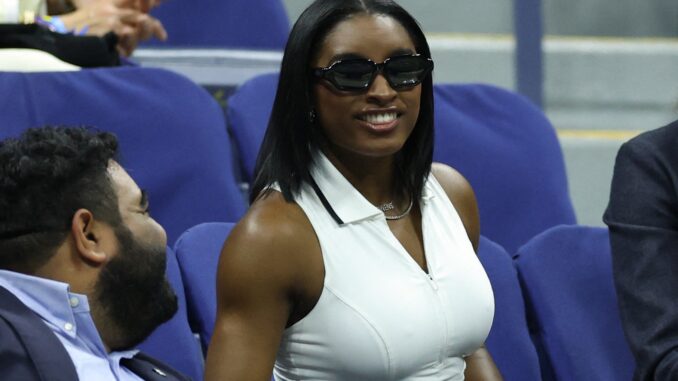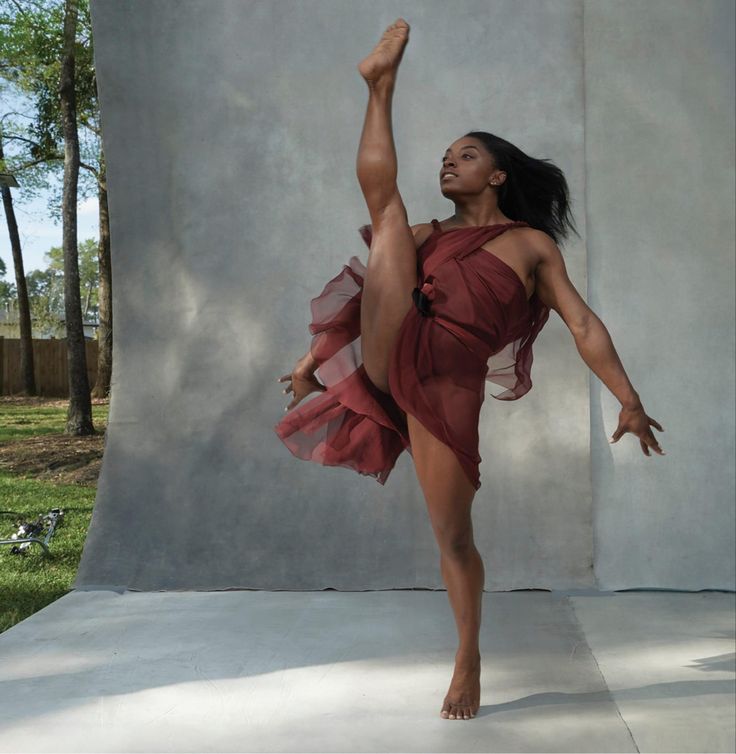
Kelly Clarkson is relieved to know that Simone Biles is just like us. On “The Kelly Clarkson Show,” Biles who is known as the greatest gymnast of all time, revealed why she posted an Instagram story in early December about not liking Pilates.
In the story, Biles said that this was her “first time working out since the Olympics” in August and she found the exercise to be “too hard.” “I hear that we have something in common,” Clarkson said on the Dec. 12, episode of her show, adding that she doesn’t like Pilates either. The talk show host explained that she thought the class was more difficult in New York than in L.A. However, Biles said that she didn’t think that was necessarily true.
If you’re a fan of gymnastics, or even just someone who admires physical excellence, you’ve probably heard plenty about Simone Biles — her gravity-defying flips, her strength, her mental resilience. But did you know there’s one particular exercise she openly admits she can’t do, even “to save her life”? That revelation is shining a new spotlight on the idea that even the greatest have limits. In this article, we’ll dive into Biles’ confession, analyze why she’s drawn that line, and explore what that means for all of us chasing our own fitness goals. Let’s get real — even the GOAT has her boundaries.
Why Simone Biles’ Confession Matters
-
Breaking the myth of perfection
-
Giving permission to listen to your body
-
Framing “weakness” as strategic choice
When someone like Simone Biles admits a limitation, it changes the narrative. It reminds us that every athlete has vulnerabilities. And sometimes, those vulnerabilities lead to smarter choices.
Which Workout Does Simone Biles Say She Can’t Do?
The Back Handspring (Without Momentum or a Spotter)
Yes — the move she says she “cannot do to save her life” is often boiled down to a pure back handspring in certain contexts. In interviews, she’s mentioned that doing a handspring on a hard surface, especially without momentum or a spotter, is something she avoids. She’s not saying she can’t execute complex flips — she’s just drawing a boundary around this particular move in its rawest form.
The Anatomy of a Back Handspring
What is a Back Handspring?
A back handspring is a foundational gymnastics move where the gymnast jumps backward onto their hands and then flips their feet over to land on them again. It requires coordination, timing, strength in the arms, shoulders, core, and explosive power from the legs.
Why It’s So Demanding
-
You’re trusting your arms and core to support your body weight mid-flip.
-
You need momentum and control, or you risk landing hard on your head or back.
-
On a rigid surface or without proper technique, the risk of injury increases drastically.
Why Simone Biles Draws the Line at That Move
1. Injury Risk vs. Reward
Simone knows her body. She’s earned her medals and accolades partially by choosing which moves to incorporate — and which to avoid. Performing a tough handspring without ideal conditions just isn’t worth the risk.
2. It’s Redundant for Her Repertoire
She doesn’t “need” that move in her elite routines. She already does more advanced flips, twists, and combinations. The back handspring, in some settings, becomes unnecessary.
3. It Doesn’t Align With Her Training Goals
Elite gymnasts often pick and choose what fits their strength, injury history, and strategic plan. For her, certain moves simply don’t align with what she wants her body to do.
Common Misconceptions — Debunked
Myth #1: “If She Can Do the Double Flip, How Come She Can’t Do the Back Handspring?”
It sounds contradictory — but gymnastics isn’t always linear. High-difficulty moves often have different technical demands than simpler ones done in isolation.
Myth #2: “Maybe She Just Doesn’t Try Enough”
Nope. She’s tried it. But perhaps, for her, the risk-to-reward ratio is off.
Myth #3: “It Shows She’s Weak at Basics”
On the contrary: she’s shown that she’s wise about where to place her energy and focus.
What You Can Learn from Her Approach
Listen to Your Body — Even If You’re Ambitious
Biles choosing not to force a move shouldn’t discourage you — it should inspire you. It means you can also honor your body’s boundaries without feeling shame.
Customize Your Training — Don’t Let Trends Dictate What You Do
Just because every fitness influencer is doing a move doesn’t mean it’s right for your body.
Focus On What Moves You Can Do Better
She invests energy in things she’s excellent at. You can too.
Alternatives to the Back Handspring You CAN Try
If you’re curious or aspiring to progress, here are safer, scalable options:
1. Back Walkover
Gentler, controlled, and excellent for building core and shoulder strength.
2. Bridge Kick-Over
Strengthens back flexibility and teaches the movement pathway in a safer context.
3. Handstand to Bridge Press
Helps manage vertical orientation before transferring into a back motion.
4. Assisted Back Handspring (with a Coach or Spotter)
Use safety mats, harnesses, or partial assistance before advancing.
How Coaches and Gyms Should Respond to a Move You “Can’t Do”
Stop Shaming or Pressuring
A gym culture that forces every student to perform every move can warp healthy boundaries.
Use Individual Programming
What works for one gymnast may not work for another — customize plans.
Normalize Workarounds and Alternatives
Just because someone can’t do “X” doesn’t mean they’re failing. Find pathways forward.
The Psychology Behind Saying “I Can’t”
Vulnerability as Strength
Biles’ admission is courageous. It humanizes her and teaches us that saying “no” can be powerful.
Limitation as Strategy
Choosing not to do something can be a tool — to preserve longevity, prevent injury, or maintain consistency.
Overcoming the Shame of Not Doing It All
We live in a culture of more — more skills, more achievements. Sometimes resisting that pull is the braver move.

Lessons for Everyday Fitness Enthusiasts
-
You don’t have to do every workout trend to be fit.
-
Listening to pain, fatigue, or misalignment is smart — not lazy.
-
Modify, regress, or skip — true fitness honors consistency, not ego.
Case in Point — A “Normal” Athlete’s Replica
Imagine you’re training for a handstand push-up, but struggle with wrist alignment. You could force it and injure, or you could skip, strengthen the wrist first, and return later. Simone’s approach models that smart restraint.
How to Respectably Say “I Can’t” in Any Sport or Routine
-
Acknowledge the limitation out loud — “I’m not doing that now”
-
Offer an alternative — “I’ll do X instead”
-
Make a plan for improvement (if applicable)
-
Stick to your boundary confidently
Wrap-Up Thoughts
Simone Biles’ openness about the one move she “can’t do to save her life” isn’t a weakness—it’s a master class in self-awareness. It shows that even icons draw lines. And in drawing those lines, they preserve their bodies, minds, and longevity. For all of us pushing strength, goals, and growth — that’s a lesson worth remembering.
Conclusion
Even the most elite athletes know their limits. Simone Biles’ candid admission about avoiding a back handspring reminds us that fitness isn’t about doing everything — it’s about choosing what serves your body, goals, and longevity. The key takeaway? Honor your boundaries, focus on your strengths, and choose progress over perfection.
